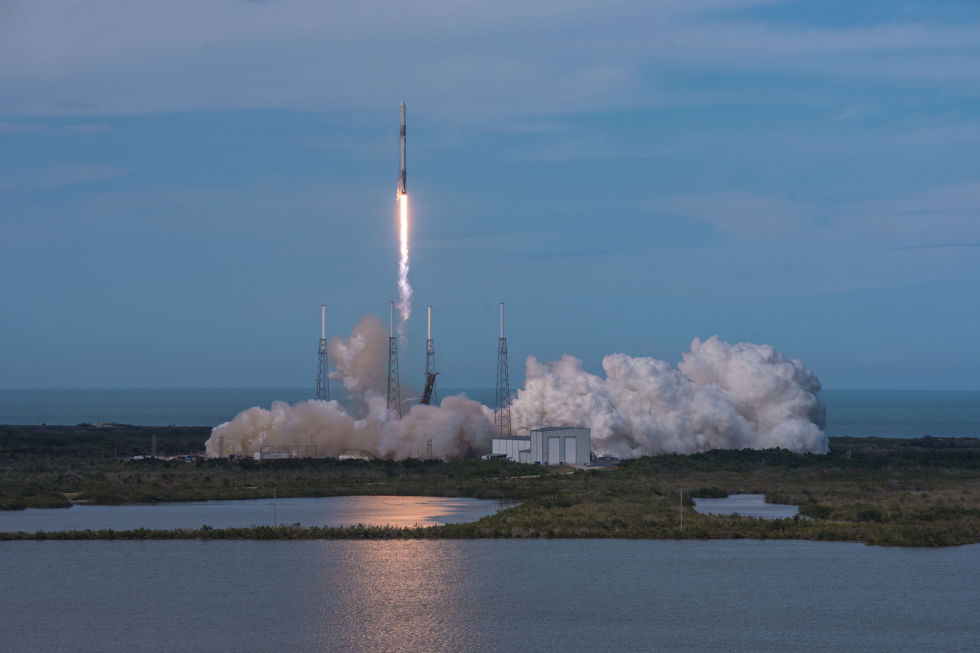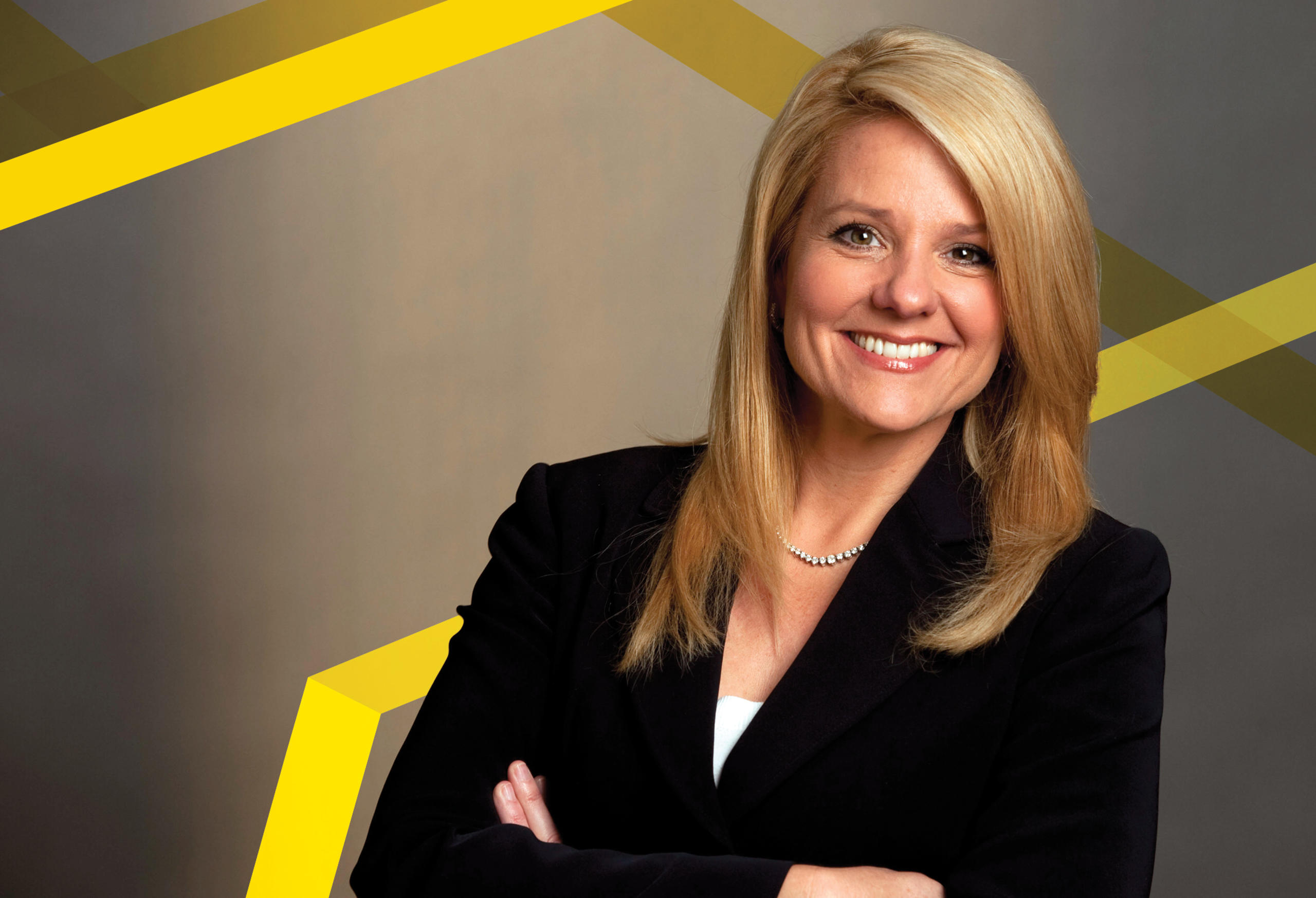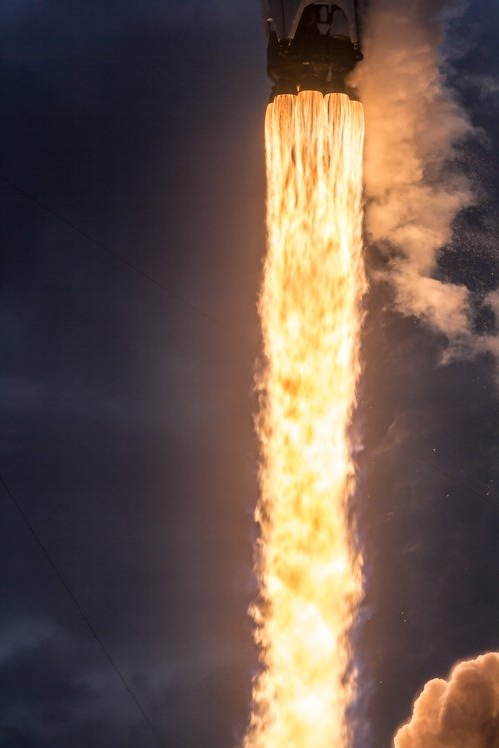SpaceX reaches record-breaking frequency of rocket launches: once every two weeks

SpaceX company offers companies that need to send any cargo into space, their services at a relatively low price. After the Ilona Mask company specialists learned how to return the first steps of Falcon9 for reuse, the launch cost decreased even more. According to Mask, the margin of one launch is minimal, the company takes not the price, but the number of starts.
The more of them, the SpaceX, respectively, the higher the income. This year, the “space driver” has managed to launch seven missiles in just seven weeks: six of them - Falcon 9 and one - Falcon Heavy. On average, one rocket is sent to space in 13 days, which is very, very good. In fact, this is a record figure for the space industry - neither private nor state companies have yet reached such a frequency of launches.
According to the plan, SpaceX should launch 27 rockets this year. This was previously described by the company's operating director Gwynn Shotwell. The announcement was made at the end of 2017. Then the company managed to successfully launch the 18th rocket in a year, and Shotwell promised to increase the frequency of launches by 50% in the next, in 2018. As you can see, the promise was fulfilled . Of course, anything can happen, because there is still almost 9 months ahead. But if it goes on like this, the company will be able to set another record - and not only for a private carrier, but also for the state.
')
But this is not all, because the ambitions of Mask and his colleagues, if not infinite, then close to it. Shotwell shared plans for the next year: the company plans to make 30 or even 40 launches in 2019.

Gwynn Shotwell
And not only in the ambitions of the case. As mentioned above, the main advantage of SpaceX over competitors is the launch price. Currently, it is about $ 60 million. It is clear that many companies want to use such an inexpensive service. In the case of competitors, the price is not tens, but hundreds of millions of US dollars. Due to the large number of volunteers, a whole line of customers has formed, which, naturally, was not paid attention to by competitors.
The question was posed interesting: “What is the point that the cost of launching a payload into space with the help of SpaceX costs several times lower than that of other companies if you have to wait for your turn for years?”. The question is not rhetorical, since from 2012 to 2016 the company launched approximately 5-9 missiles per year. It is clear that Ilon Mask could not help but respond to the attacks, but he decided not to enter into an argument, but to show his possibilities by action. The goal was set - to increase the frequency of launches of Falcon 9, and now this task has been achieved.

Perhaps SpaceX competitors themselves are not happy that they, in fact, forced the company to grow faster than it had planned. But nothing can be done. And SpaceX continues to build momentum - the company has as many as three launch sites, with which it can continue to set records in the number of missile launches. However, the company will only increase the intensity of the load on the cosmodrome if the customers ask for help as often as before.
This month, Mask plans to launch two more launches - April 16 from launch pad No. 40 (Florida, United States) and at the end of the month, from pad No. 39A, which is also located in Florida, next door. Two launches are also scheduled for May. If this pace can be maintained, then SpaceX for the first time in history will become a company that enables partners to launch payload into space without huge costs. Yes, $ 60 million is a lot of money, but for the space industry this is not at all an overwhelming amount.
By the way, in the next 12 months, the company plans to use 11 rocket stages previously returned to Earth. And next month, SpaceX is going to start using an updated version of the accelerator, Block 5.
At the same time, NASA continues to implement a project to create its own heavy SLS launch vehicle, the launch cost of which will be about $ 500 million. But for the time being it is completely unclear who will use it and how. There is no plan and there are no customers (even if they are state-owned). Why develop it? The question is not idle.
Source: https://habr.com/ru/post/371407/
All Articles